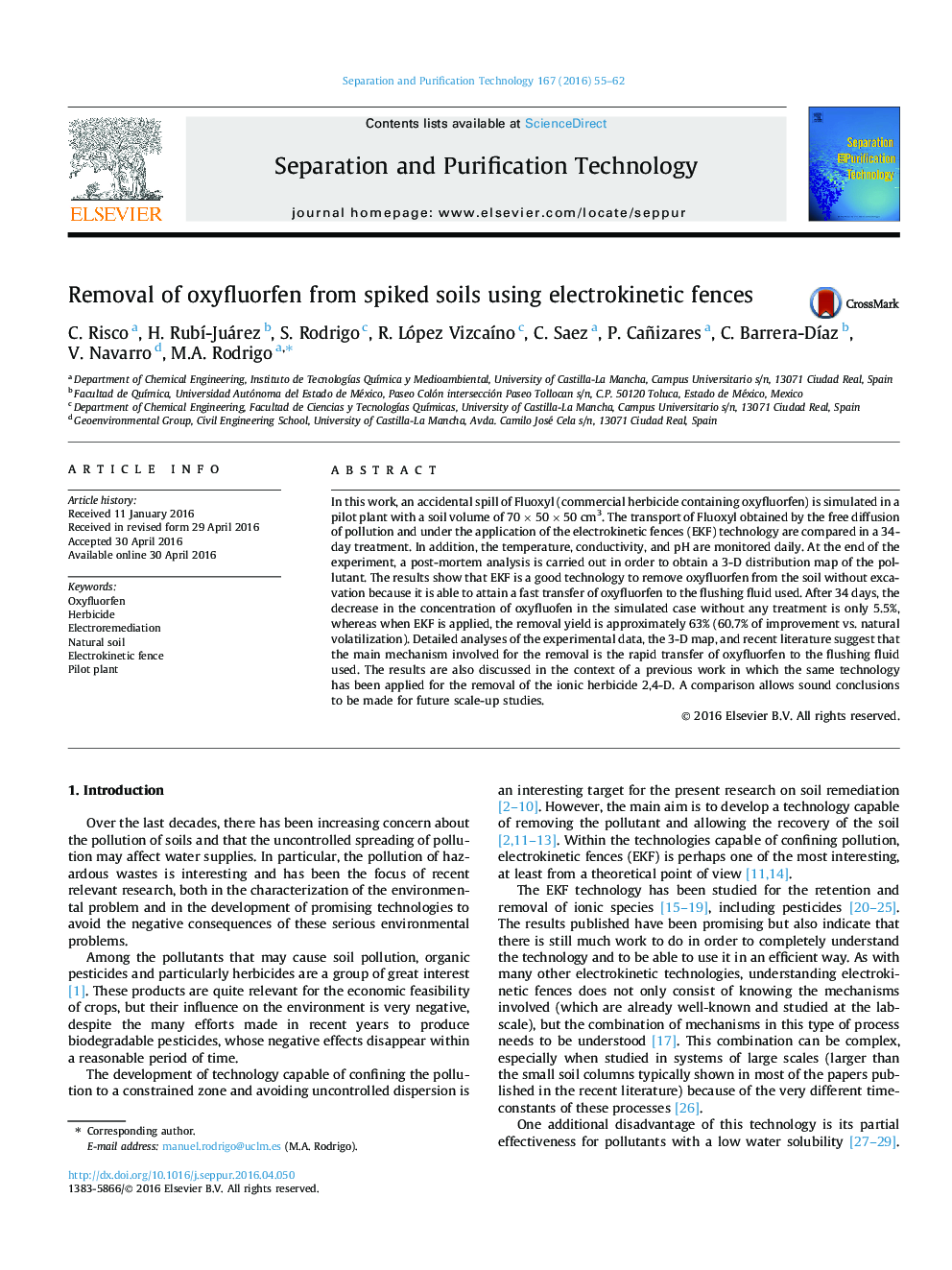| کد مقاله | کد نشریه | سال انتشار | مقاله انگلیسی | نسخه تمام متن |
|---|---|---|---|---|
| 639854 | 1456953 | 2016 | 8 صفحه PDF | دانلود رایگان |
• EKF is efficient for the treatment of soils that undergo discharges of oxyfluorfen.
• Electrode arrangement applied in EKF minimizes the effects of the pH fronts.
• A slight increase in temperature in the zone surrounded by the electrodes is observed.
• The current intensity and flow vary during the tests, despite the use of a constant electric field.
• Dragging of the oxyfluorfen micelles by EOF is the primary removal mechanism.
In this work, an accidental spill of Fluoxyl (commercial herbicide containing oxyfluorfen) is simulated in a pilot plant with a soil volume of 70 × 50 × 50 cm3. The transport of Fluoxyl obtained by the free diffusion of pollution and under the application of the electrokinetic fences (EKF) technology are compared in a 34-day treatment. In addition, the temperature, conductivity, and pH are monitored daily. At the end of the experiment, a post-mortem analysis is carried out in order to obtain a 3-D distribution map of the pollutant. The results show that EKF is a good technology to remove oxyfluorfen from the soil without excavation because it is able to attain a fast transfer of oxyfluorfen to the flushing fluid used. After 34 days, the decrease in the concentration of oxyfluofen in the simulated case without any treatment is only 5.5%, whereas when EKF is applied, the removal yield is approximately 63% (60.7% of improvement vs. natural volatilization). Detailed analyses of the experimental data, the 3-D map, and recent literature suggest that the main mechanism involved for the removal is the rapid transfer of oxyfluorfen to the flushing fluid used. The results are also discussed in the context of a previous work in which the same technology has been applied for the removal of the ionic herbicide 2,4-D. A comparison allows sound conclusions to be made for future scale-up studies.
Figure optionsDownload as PowerPoint slide
Journal: Separation and Purification Technology - Volume 167, 14 July 2016, Pages 55–62
